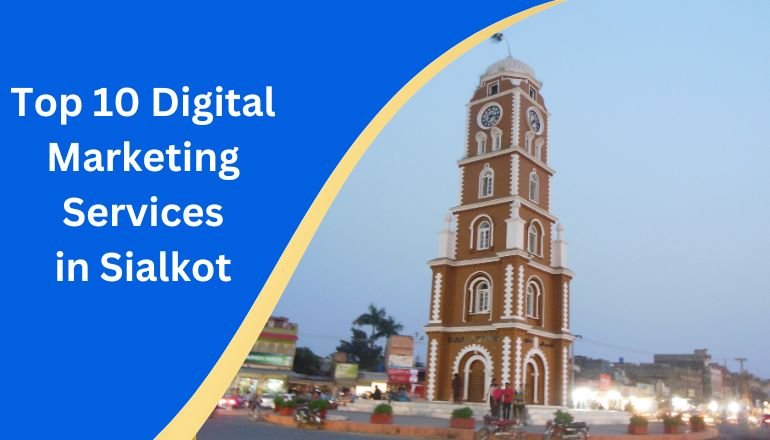In today’s digital landscape, businesses are constantly exploring ways to improve their online visibility and connect meaningfully with their audience. Digital marketing strategies like SEO, social media advertising, and Google Ads have proven their power in helping companies reach a wider audience. However, for businesses targeting local markets, local content plays an even more significant role in driving engagement.
At Best Digital Marketing Agency, we specialize in creating digital strategies that amplify businesses’ online visibility, and in this article, we’ll explore the importance of local content, why it matters, and how to develop it effectively to resonate with your target audience.
Introduction to Creating Local Content
Local content refers to the creation and sharing of content tailored specifically to a particular geographic area, community, or local audience. It can include blogs, social media posts, videos, and other forms of media that reflect local interests, events, culture, and preferences. By focusing on local relevance, businesses can better engage their audience, build stronger relationships, and drive more relevant traffic to their websites.
Creating content that resonates with local audiences is a key aspect of local SEO. This type of content not only boosts a business’s search engine rankings for location-specific queries, but it also helps businesses position themselves as valuable community partners.
Why Creating Local Content Matters
Creating content with a local focus is powerful for several reasons:
- Improved Local SEO: High-quality, locally relevant content helps you rank better in local search results. When people search for products or services “near me,” businesses that produce relevant content tailored to their locality will stand a better chance of showing up.
- Stronger Customer Connections: Localized content resonates more strongly with your target audience. It speaks to local values, culture, and the specific problems your community faces, making it easier to build trust and rapport with potential customers.
- Increased Engagement: People are more likely to engage with content that speaks to them directly. By creating content that is relevant to local trends, events, and concerns, your business can enhance its online presence and foster more interactions with the community.
- Improved Local Brand Awareness: Targeting local audiences with content related to your area boosts your visibility and raises awareness of your brand in the community. It encourages word-of-mouth marketing and customer loyalty, leading to repeat business.
Overall, local content drives relevant traffic, builds relationships, and enhances brand positioning.
Key Components of Local Content
To create impactful local content, focus on these core elements:
- Local Keywords: Use location-specific keywords throughout your content to ensure it’s discoverable in local search queries. This includes mentions of the city, neighborhood, landmarks, and events.
- Community Involvement: Highlight local events, charities, or business partnerships in your content. Creating content related to the local community makes your business appear invested and supportive of local causes.
- Local Landmarks and Features: Incorporate mentions or imagery of iconic local landmarks, scenery, and neighborhood-specific features that resonate with your target audience. This builds a stronger connection and ties your business to the local identity.
- Localized Solutions: Address the specific problems or needs of people in your locality with content that showcases your understanding of the local context. This demonstrates how your business can provide valuable solutions to regional challenges.
- Customer Stories: Showcase customer testimonials and success stories that highlight the impact your business has had on local customers. Authentic, local-driven success stories are relatable and help reinforce your business’s local relevance.
Best Practices for Creating Local Content
Here are actionable tips to develop effective local content:
- Research Local Trends and Interests: Stay on top of the latest news, trends, and interests in your area by monitoring social media, local publications, and community conversations. Use these insights to shape your content and ensure it resonates with your audience.
- Use Local Data: Incorporate statistics, studies, and data from reputable local sources to back your content. This positions your business as a knowledgeable local authority in your industry.
- Optimize Content for Local SEO: In addition to using local keywords, ensure your content is optimized for local searches by implementing local SEO strategies like consistent NAP (name, address, phone number) listings, localized meta tags, and Geo tags.
- Share User-Generated Content: Engage with your customers by encouraging them to share their stories, photos, and experiences with your brand. User-generated content showcases local connections and builds trust within your community.
- Leverage Social Media: Promote your local content across social media platforms like Facebook, Instagram, and Twitter, with a focus on local hashtags, mentions of local hotspots, and participation in local events or promotions.
By adopting these strategies, small businesses can successfully create content that engages local customers and improves their online presence.
Common Mistakes to Avoid in Local Content Creation
While crafting local content can drive significant benefits, there are a few common mistakes you’ll want to avoid:
- Overlooking Local Keywords: Failing to integrate location-based keywords limits your content’s visibility in local search queries. Ensure these keywords appear naturally in your headlines, subheadings, and body content.
- Ignoring Mobile Optimization: Many local searches occur on mobile devices. Make sure your local content is mobile-optimized for smooth navigation and a better user experience.
- Neglecting User Engagement: Content that doesn’t foster interaction or feedback doesn’t resonate as well with local audiences. Ask questions, encourage comments, and invite shares to keep the conversation going.
- Not Updating Content Regularly: Local trends and interests can shift over time. Keep your content up-to-date to stay relevant in the eyes of your community.
- Not Tracking Metrics: It’s important to track how well your local content is performing. Use analytics to measure engagement, traffic, and conversion metrics to refine your strategy over time.
How Local Content Fits into a Comprehensive Digital Marketing Strategy
Local content should be a central component of your overall digital marketing strategy. Here’s how it integrates with other tactics:
- Local SEO and Content: Combining optimized local content with SEO best practices helps improve rankings for location-based searches and increases organic traffic.
- Paid Advertising and Local Content: Use Google Ads and social media campaigns to promote your localized content to the right target audience, driving more visitors and conversions.
- Social Media Marketing and Content: Sharing your locally tailored content on social platforms increases its reach, builds community engagement, and draws more attention to your business.
By integrating local content into a broader marketing strategy, businesses can increase their online visibility, create lasting local connections, and foster brand loyalty.
Key Takeaways
Creating local content is a powerful way for businesses to increase their local visibility and connect with their community. By understanding your audience, focusing on local relevance, and avoiding common mistakes, you can craft content that resonates deeply with your target market.
For businesses looking to strengthen their local content strategy, Best Digital Marketing Agency can help you build impactful campaigns and content strategies that speak to your audience and drive lasting success.













